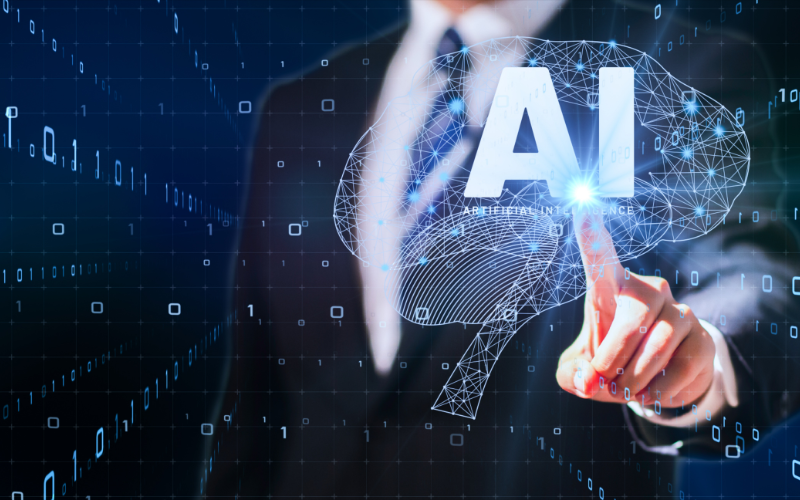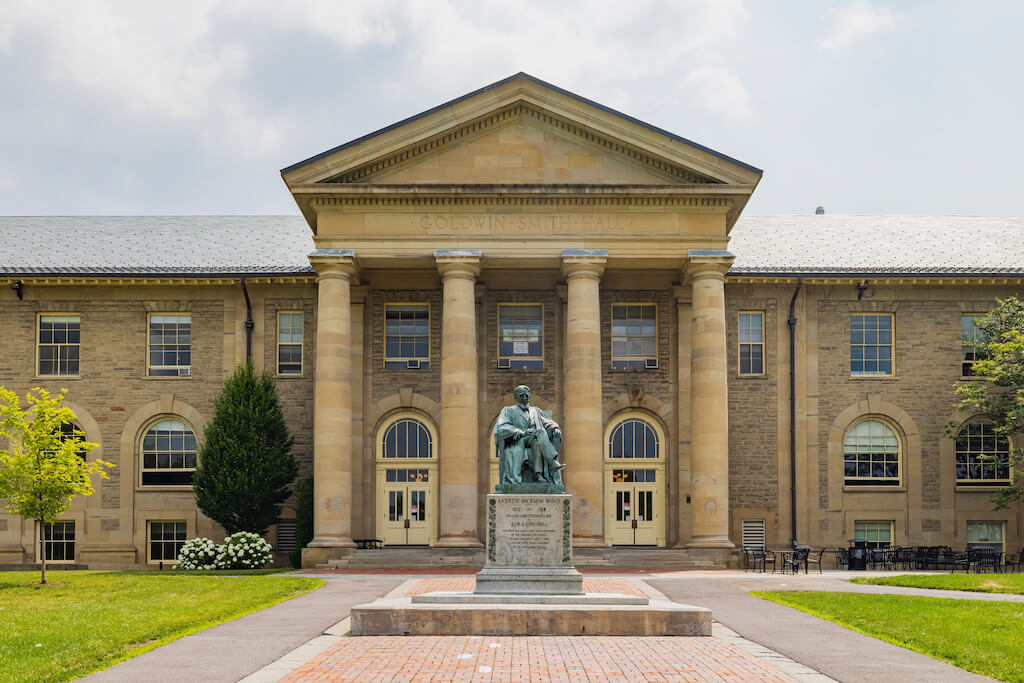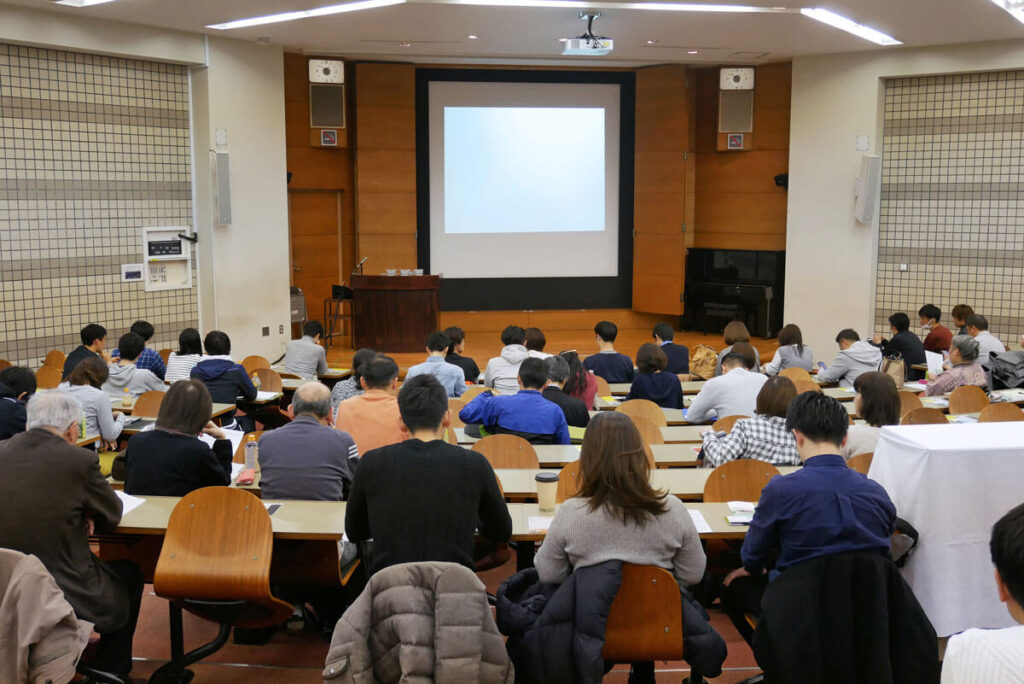Mustafa Suleyman is no stranger to Artificial Intelligence (AI). He co-founded two AI companies, DeepMind and Inflection AI. Recently, it was announced that he is leaving Inflection AI to become CEO of Microsoft AI. His credentials as an AI innovator are impeccable. The Coming Wave is Suleyman’s attempt to make everyone aware of the power of AI and synthetic biology, as well as the potential for each of them to spiral out of control. The book is organized into four parts:
- Homo Technologicus
- The Next Wave
- States of Failure
- Through the Wave
“Containment Is Not Possible” is the title of Chapter 1, the only chapter not included in one of the four parts. The chapter functions as a short introduction to the impact of technology throughout man’s existence. Each of these existential moments can be classified as a wave as the innovation flows across the glove.
Suleyman writes that AI and synthetic biology will create wealth and surplus unlike anything ever experienced before. At the same time, the speed of their proliferation risks empowering bad actors who could launch “disruption, instability, and even catastrophe on an unimaginable scale.” Our future depends on these innovations and is imperiled by them.
Despite the many books written about past and current technologies, Suleyman notes that it is rare that anyone recommends containing them. In the case of these two technologies, Suleyman hopes his book shows why containment is necessary.
Our leaders, political and technical, tend to put their heads in the sand when it comes to discussing a need for containment. Suleyman refers to this emotional response as “pessimism aversion.”
The continued development of AI and synthetic biology is driven by powerful incentives: geopolitical competition, massive financial rewards, and an open, distributed culture of research. Containment must be possible to reduce the risk of catastrophe.
Part I: Homo Technologicus
Throughout human history, general-purpose technologies have become waves when they diffuse widely. Among the examples that Suleyman includes are:
- Agriculture
- Airplanes
- Automobiles
- Combustion Engines
- Computers
- Electricity
- Fire
- Language
- Mechanical looms
- Printing press
- Stone tools
- Telephone
- Television
- Wheel
- Writing
Over time, demand for these products motivated people to create cheaper versions with more robust features. This created even more demand. New tools generated larger populations.
The first wave of the Industrial Revolution included steam power, the factory system, and canals. The second wave of the Industrial Revolution included the internal combustion engine, chemical engineering, powered flight, and electricity. The third wave was the information technology revolution. The fourth wave is the merger of the physical, digital, and biological worlds in ways that create huge promise and peril.
The Containment Problem
Suleyman writes that “technology’s unavoidable challenge is that its makers quickly lose control over the path their inventions take once introduced to the world.” Thomas Edison invented the phonograph so people could record their thoughts and to help the blind. Music was never a targeted user segment. Gutenberg just wanted to print Bibles, not books and newspapers.
To understand technology, you must understand its unintended consequences, also known as its “revenge effects.” The more powerful a technology, the more ingrained it becomes in everyday life. If a feature of AI cannot be eliminated, it may have to be curtailed or contained.
Containment requires the capability to stop a use case, change the direction of research, or deny access to bad actors. Suleyman defines containment as “a set of interlinked and mutually reinforcing technical, cultural, legal, and political mechanisms for maintaining societal control of technology during a time of exponential change.”
Nuclear weapons are one of the most contained technologies in history. Even so, the containment problem remains unsolved because there is always the risk that bad actors gain access to or build a nuclear weapon.
Suleyman writes that over the course of a single century, technology waves launched mankind from an era of candles and horse carts to electrical power stations and space stations. AI will transform mankind similarly over a shorter period, which he estimates to be the next three decades.
The challenge of AI will be containing the power it has yet to unleash.
Part II: The Next Wave
Suleyman’s experience at DeepMind provided him with various examples to describe the power of the intelligent machine. He described how his engineers initially created an algorithm called DQN, short for Deep Q-Network. DQN was trained to play many classic Atari games by itself. Within a few months, it reached superhuman performance levels.
DeepMind’s team began to train its algorithm to play the Chinese game of Go. The game is far more complex than chess. In fact, the 19-by-19 grid board has a total of 10170 possible configurations.
The engineers initially trained AlphaGo by loading 150,000 games played by human experts. After tweaking the algorithm, they created many different copies of AlphaGo and set it up for the copies to play the game against each other over and over. In a famous match against the world’s top player, AlphaGo won 4 to 1.
AI is enabling mankind to replicate speech and language, vision, and reasoning, areas previously closed to technology. Breakthroughs in synthetic biology have allowed scientists to sequence, modify, and print DNA. Technologies such as quantum computing, robotics, nanotechnology, and fusion surround AI and synthetic biology advancements.
Containing the next wave will be more difficult than any in history. It will be a supercluster of technologies. Different parts of the wave will accelerate others. No one knows what combinations will surface.
Mass Scale AI is Underway
“Massive datasets are being used to teach AI systems to create more efficient and more accurate products in all areas of our lives,” writes Suleyman. Much of his work as an entrepreneur involved translating advanced AI techniques into practical applications. AI is no longer emerging. It is in products, services, and devices we use daily.
Large language models (LLMs) like ChatGPT are just starting to scratch the surface of what their capabilities may be. In less than three decades, the number of people using the internet globally increased from a few hundred thousand to five billion. Suleyman expects a faster growth trajectory for people using LLMs as tools.
Over the past ten years, the computation used to train large AI models has grown exponentially. Thanks to advances in chip technology, systems engineers can connect larger and larger arrays of chips, increasing the potential for large AI training datasets to increase substantially in size.
More With Less
Suleyman writes that AI researchers are reducing costs and driving up performance so that their models can be used in all types of settings. The acceleration of AI’s progress eclipses records every day. Several important LLMs are available to anyone through open-source code.
AI is now capable of assisting engineers with generating production-quality code. Microsoft Copilot is estimated to make engineers 55% faster at coding. Some people are openly skeptical that AI’s advances can continue at this pace. Our existing AI systems operate in very narrow lanes. ChatGPT is great at writing but can’t drive a car. That will eventually change.
Artificial General Intelligence is achieved when the intelligence of a machine is equal to that of a human’s brain. According to Suleyman, some people have framed this moment in time as likely to occur at the flick of a switch. He disagrees with that prediction and believes AGI will occur through a gradual transition.
Suleyman has coined the term “artificial capable intelligence” (ACI), which is the point at which AI can achieve complex goals and tasks with minimal oversight. These systems are on their way, according to Suleyman. When they arrive, everyone will have access to them, ostensibly through their cell phones.
The Technology of Life
The coming decades will be defined by a convergence of biology and engineering, writes Suleyman. Synthetic biology is experiencing a trajectory like AI, where costs are falling, and capabilities are increasing. Enhancing these capabilities is the realization that DNA is a biologically evolved encoding and storage system.
DNA Scissors, aka CRISPR
The Human Genome Project had a goal to unlock the three billion letters of genetic code making up the human genome. It took 13 years and billions of dollars to succeed. However, it formed the beginning of a revolution. Thanks to improving techniques, the cost of human genome sequencing fell from $1 billion in 2003 to under $1,000 in 2022.
Biotech’s power extends beyond an ability to read DNA code. Scientists can now edit it and write it, too. CRISPR (clustered regularly interspaced short palindromic repeats) genetic editing is the best-known example of how genes can be edited like text or computer code.
Genetic engineering is evolving almost as fast as AI. CRISPR use cases are multiplying. Safe gene therapies are on their way. Even better, CRISPR is a technology that is simple and cheap to use. Anyone with a serious interest can buy a benchtop DNA synthesizer for as little as $25,000.
DNA Printing
Synthesis is the manufacture of genetic sequences by printing DNA. Ten years ago, scientists could produce less than a hundred strands of DNA at the same time. Today, scientists can produce millions at the same time for one-tenth of the price from a decade ago.
Many different possibilities have been developed for the creation of DNA. Cycles of designing, building, testing, and iterating are happening at an accelerated pace. The current limitations in home DNA printers will likely be overcome soon so that anyone will have access to these capabilities.
Technology Spawns Biological Creativity
The emerging field of synthetic biology is responsible for many creative experiments. These ideas range from proteins that purify dirty water to organs grown in vats and plants that consume toxic waste. It’s only a matter of years before medical care will tailor our treatment plans to our DNA and biomarkers.
Initial work suggests genetic blindness can be cured, memory can be improved, and muscle strength can be enhanced. Gene doping will become an issue in sports and other professional life as the technology and technique becomes perfected.
Suleyman writes that genetically engineered organisms account for two percent of the U.S. economy through agricultural and pharmaceutical uses. Furthermore, McKinsey & Company estimates that 45% of the global disease burden could be reduced by scientific techniques available today. As the cost of the tools decreases, the possibilities increase.
AI’s Contribution to Synthetic Biology
Proteins are nature’s superstars, according to Suleyman. Understand them, and you have taken a giant step toward understanding life. Knowing the DNA sequence is not enough to know how a protein works. Scientists had to understand how the protein folds. Previous attempts at predicting how a protein would fold were part of an arduous process.
Suleyman writes that in 1993, scientists set up a biannual competition called Critical Assessment for Structure Prediction (CASP) to see who could solve the protein folding problem. Teams attempted to predict the structures for targeted proteins.
At CASP13 in 2018, a team from DeepMind called AlphaFold beat 98 established teams. They successfully predicted the protein structures for 25 of 43 difficult targets. The second-place team predicted three. The DeepMind team used neural network models and trained them on a set of known proteins. AlphaFold was so good that scientists voted to retire CASP.
In 2022, AlphaFold was made available to the public. More than a million researchers accessed the tool within 18 months of launch. Previous initiatives had delivered the structures of 190,000 proteins to the European Bioinformatics Institute. DeepMind uploaded 200 million structures, essentially all known proteins.
Suleyman maintains that these synthetic biology accomplishments are only the beginning of what is possible. He compares the outcomes to two waves crashing together, creating the power of a superwave. Researchers are in the early days finding ways to provide the human mind with instant access to computation and information on the scale of the internet.
The Wider Wave
Tech waves are always bigger than just one or two general-purpose technologies, writes Suleyman. They are clusters of technologies accelerated by general-purpose tech. The waves develop in amplifying loops. He provides a few examples of tech other than AI and synthetic biology that are coming of age at the same time.
Robotics
The future of agriculture, as seen through the new products developed by industry leader Deere & Co., includes autonomous tractors and combines. In addition to driving guided by GPS coordinates, tractors and combines are using arrays of sensors to adjust planting and harvesting to maximize crop yield.
Manufacturing and warehouse robots have acquired skills related to torque, tensile strength, precision, pressure, and adaptation. Soon, these robots will migrate from factories and warehouses to restaurants, bars, nursing homes, and schools.
Future robots will swarm and clean up oil spills or build buildings. Suleyman wrote that Walmart filed a patent for robot bees to swarm and pollinate crops. Concrete spraying robots are able to build buildings in days for far less than traditional construction costs.
Robots, Suleyman writes, will be the bridge that connects AI to the real world.
Quantum Supremacy
Quantum computing has grown from hypothetical to working models in four decades. Its vastly superior speed means that each additional qubit of processor doubles a machine’s total computational power.
Current encryption strategies work because our existing computers cannot try all the different combinations needed to break the codes. Quantum computers have the power to quickly crack existing encryption codes.
Solving times for optimization problems are sped up using quantum computers. Their most significant potential, according to Suleyman, is in modeling chemical reactions and the interaction of molecules. Developing new drugs could take far less time.
Clean Energy
Renewable energy is projected to be the largest single source of electrical generation by 2027. Fusion and solar power offer the promise of centralized and decentralized energy grids. All of this comes in time to reduce our dependency on fossil fuels and increase capacity for future server farms.
Four Features Compounding Containment Problem
While researchers explore the ways AI will help us push the boundaries of what human beings can accomplish, they are also working toward limiting possible negative effects on our society.
Here are four AI features that researchers believe compound the AI containment problem:
- Asymmetry. AI unleashes computing power to many, disrupting the centralization of power. A single AI program can write as much text as all humans. A single quantum computer can disrupt all the world’s encryption protocols. One point of failure in an interconnected system can disrupt the world.
- Hyper-evolution. Innovation in the real world could begin moving at a digital pace. Simulations will perfect products that can be built immediately. Biological evolution is cycling at the same speed as software.
- Omni-use. Dual-use technologies are those with civilian and military applications. The Global Positioning System (GPS) was originally a military system, but its consumer usage now exceeds its military usage. The more powerful the technology, the more uses it may have. Predicting the number of use cases is difficult.
- Autonomy. Autonomous systems can take action without the immediate approval of humans. With every interaction with humans, AI is learning to be successfully autonomous. Systems exist that find their own strategies to succeed. Humans are unable to predict what these autonomous systems will do next.
Unstoppable Incentives
Technology is advanced by fundamental human drivers, writes Suleyman. If people have reasons to build it, it will be built. Innovation is power. Nations feel the need to keep up with their peers in technology innovation. China has an explicit strategy to be the world’s leader in AI by 2030. China currently leads the world in robotics and quantum computing.
America is in an arms race with China. Other countries are major participants. Almost every country has an AI strategy. Yet, there is no global central authority controlling what technologies get developed, writes Suleyman. Technology is currently an orchestra without a conductor.
Over the centuries, scientific discoveries have been shared openly. Our global system of open knowledge is almost impossible to steer, govern, or shut down. Large amounts of AI code and data are public. Worldwide annual R&D expenses exceed $700 billion. Scientific research is unpredictable, open, and growing fast.
Suleyman provides several examples to prove the point that most technology is developed to earn money. Over the centuries, the development of technology has driven major leaps in output and living standards. The coming wave represents the greatest economic prize in history.
“PwC forecasts AI will add $15.7 trillion to the global economy by 2030. McKinsey forecasts a $4 trillion boost from biotech over the same period. Boosting global robot installations 30% could unleash a $5 trillion dividend.” Suleyman writes that with profits this high, interrupting the gold rush will be challenging.
There is only one entity that can take responsibility for the technologies that society produces, and that is the nation-state. Suleyman writes that the problem is that nations are facing massive strain, and the coming wave will make things more complicated.
Part III: States of Failure
“The grand bargain of the nation-state,” writes Suleyman, “is that not only can centralized power enable peace and prosperity, but this power can be contained using a series of checks, balances, redistributions, and institutional forms… The political order that fostered rising wealth, better living standards, growing education, science, and technology, a world tending toward peace, is now under immense strain, destabilized in part by the very forces it helped engender.”
Democracies are built on trust, and Suleyman writes that since 2010, more countries have lost ground in their path toward democracy than have gone forward. That process of regression seems to be accelerating as well.
Global challenges like rampant inflation, energy shortages, stagnant incomes, breakdowns of trust, and waves of populism are increasing. This makes containment more complicated.
Technology and the modern state have evolved “symbiotically,” writes Suleyman. Inventions like writing, the printing press, bookkeeping, clocks, trains, engines, cars and trucks, radio, and TV have all contributed to a national commonality. War, enabled by technology, has contributed to the power of nation-states as well.
The introduction of new technologies clearly has major political consequences. Suleyman believes the wave created by AI and synthetic biology will lead to two trajectories:
- Some liberal democratic states will continue to be eroded from within.
- Unthinking adoption of some aspects of the coming wave opens pathways to domineering state control beyond history’s most totalitarian governments.
We should expect major changes to the economy, the nation-state, and the balance of world economic and governance structures.
Fragility Amplifiers
Cyberattacks on corporations and governments are examples of the new era of vulnerability and instability that will impact the nation-state’s role in providing security to its institutions and to its citizens.
Power, no matter where it is, will be amplified thanks to the wave of future technologies. Billions of people have access to smartphones. Access to Artificial Capable Intelligence (ACI) will spread to everyone with a smartphone or a laptop. This will result in the most rapid acceleration of wealth and prosperity in human history, writes Suleyman.
Democratizing access also means democratizing risk. Bad actors will have access to the same technologies. Everything electronic now relies on large code bases. Future AI advances will make it easier to identify and exploit weaknesses in those code bases.
The same applies to developing psychological tricks to gain our trust. Information and communication are another escalating area of risk that requires attention. Suleyman welcomes everyone to the era known as the era of deepfakes.
Misinformation Automation
The world of AI-created videos indistinguishable from real videos is here. Deepfakes are spreading fast. Anyone motivated to create instability can pursue that more easily with the latest available AI video creation tools.
Creating rich synthetic histories of fake “real-world events” will be easy to generate. Most of our global citizenry will not have the time or technical tools to verify most of the video content. It is a foregone conclusion that fakes will proliferate.
In the 2016 U.S. election, Russian agents were responsible for the creation of more than 80,000 pieces of content that reached over 100 million Americans. During the COVID-19 epidemic, Russians were also responsible for creating bots that impersonated influential people and argued for reopening America.
Leaky Laboratories
Suleyman writes that biological labs are subject to global standards that should stop accidents. Yet accidents and leaks still happen. Flu viruses, anthrax spores, foot-and-mouth disease, and SARS are examples of pathogens that major government-controlled labs accidentally released.
A U.S. risk assessment from 2014 estimated that over a 10-year period, the risk of a major lab leak was 91%; the risk of a pandemic from that major lab leak was 27% over the same period.
Gain of function (GOF) research is a controversial practice where viruses are engineered to be more and less threatening. While the U.S. banned it for a few years, in 2019, it removed the ban. The GOF research is meant to keep people safe. However, having stronger samples in storage that may not be secure risks another pandemic.
The Automation Debate
Arguments about the ability of AI to replace the jobs of blue-collar and white-collar workers continue to be debated. Suleyman cites the work of economists who estimate that robots cause the wages of workers to fall. He also cites the work of economists who argue that new technology consistently raises incomes by creating demand for new labor.
Suleyman believes the rosy economic vision is implausible over the next few decades. Automation will eliminate jobs in the near future. The number of people who will earn a Ph.D. in machine learning is relatively small compared to the number of people who will lose their jobs. At the very least, hundreds of millions of people will have to be reskilled.
A job recession will reduce income tax receipts and result in fewer public services as well as funds for welfare and unemployment programs at a time when they would be in high demand. This disruption will damage and undermine the nation-state.
The Future of Nations
Suleyman writes that people like to measure AI progress by comparing it with how humans can perform a specific task. This analysis, he posits, misses the fact that organizations are also a type of intelligence that can be impacted by AI. What happens when most of the tasks required to operate a company or government can be operated by machines?
Corporations have been collapsing a vast array of services into a single entity for years. To understand the depth of services concentration, Suleyman writes that the combined revenues of companies in Fortune’s Global 500 are already at 44% of the world GDP. Their profits are larger than all but the six largest countries’ annual GDPs.
The frontier of the coming wave is already found in corporations, not governments or academic labs. The top 10% of global firms take 80% of the total profits. A group of them will grow behind the size and reach of many nation-states. The coming wave will put immense power and riches into the hands of those who create and control it.
Surveillance: Rocket Fuel for Authoritarianism
Governments appear to be far behind the preparation curve for the coming wave compared to corporations. At the same time, the wave could inject a push for centralized power and control that will make state functions more repressive than mission-oriented.
China has developed AI expertise in areas of surveillance, such as object tracking, scene understanding, and voice or action recognition. Facial recognition software advances led to Chinese researchers founding Sense-Time, one of the world’s largest facial recognition companies built on a database of two billion faces.
Half of the world’s CCTV cameras are in China. The government’s goal is to use that data and data gleaned from other databases to spot emerging threats to the Chinese Communist Party (CCP). China is exporting its surveillance technologies to other countries, including the U.S. London may be the most surveilled city in the world outside of China.
Fragmentation: Power to the People
Suleyman provides a few examples of how an organization like Hezbollah functions like a state within a state inside Lebanon. He writes that the coming wave of technology could enable a range of small, state-like entities a lot more plausible. AI combined with cheap robotics, advanced biotech, and clean energy sources might make a living off the grid possible for these groups.
In addition, fields like education and medicine that rely on huge social and financial infrastructures could be slimmed down and localized at a much lower cost for a quasi-state entity. Redistributing power means communities of all kinds can live as they wish.
As people take power into their own hands, Suleyman expects inequality’s newest frontier to be biology. A fragmented world could lead to a situation where some areas are more permissive about human experimentation than others.
Suleyman writes that the fragmented world is one “where billionaires and latter-day prophets can build and run microstates; where non-state actors from corporations to communes to algorithms begin to overshadow the state from above and from below.”
The Dilemma
Civilization is not a stranger to pandemics. Two pandemics killed up to 30% of the world’s population. Catastrophic events like wars have killed up to 10% of the world’s population. Technological risk takes humanity into uncertain territory, writes Suleyman. All the trends point toward an abundant number of widespread risks.
Catastrophes like war and pandemics are likely in the future. Terrorists could choose to attack large numbers of people with asymmetric weapons like drones firing bullets or projectiles. They could also choose to attack large groups with drones and a known pathogen. Revolutions could be stoked by misinformation campaigns led by a handful of people.
“AI is both valuable and dangerous precisely because it’s an extension of our best and worst selves,” Suleyman asks the reader to imagine scenarios where AIs control energy grids, media programming, power stations, planes, or trading accounts for large banks. When militaries own autonomous weapons, a hack developed by an AI could wreak havoc.
What level of societal control is appropriate for stopping an engineered pandemic? The consequences for freedom and privacy “have never been so potentially painful.” If the answer to catastrophe is a dystopia, then that is no answer at all, writes Suleyman.
Stagnation
Most of us act as if our lives can carry on indefinitely. Suleyman notes that civilizations that collapse are not the exception; instead, they are the rule. Without new technologies, civilizations hit hard limits to development that bring them down.
The development of new technologies is a critical part of meeting Earth’s grand challenges. Pausing technical development would not mean avoiding dystopia or the collapse of our civilization. Without new technologies, as many countries’ populations decline, it will be impossible to maintain living standards. A moratorium on technology is not a way out.
Suleyman acknowledges the dilemma faced by society. He writes, “Technology is demonstrating the real possibility to sharply move net negative, that we don’t have answers to arrest this shift, and that we’re locked in with no way out…Containment must be possible.”
Part IV: Through the Wave
Suleyman opens his final section with the words that he “once intended to write a book with a rosier picture about the future of technology and the future in general.”
His reflective time during COVID-19 allowed him to reconnect with the fact that exponential change is coming, and it needs to be addressed.
If containment needs to happen, Suleyman asks, “What’s the best way to implement it?”
Nearly everyone he has spoken to recommends regulation. He believes it is not enough. Governments will face multiple crises, and their workforces will be under-skilled and unprepared for the challenges that lie ahead.
“The price of scattered insights is failure, and we know what that looks like.” At the highest level, the goal of everyone should be containment.
Suleyman writes about the EU’s AI Act, which will go into effect in May 2024. He says it has been attacked from all sides as going too far or not far enough. He praises its system of classifying AI research and deployment based on risks from no-risk to high-risk. The reality is that a government or group of governments cannot do containment alone.
Containment needs to be a set of guardrails that can stop a runaway catastrophe. The four features of the coming wave; asymmetry, hyper-evolution, omni-use, and autonomy; need to be viewed through the lens of containability.
Ten Steps Toward Containment
Suleyman presents ten ideas or steps toward containment that he suggests readers consider as concentric circles. Each of them requires different kinds of interventions. Each is a vast and specialized subfield.
- Safety. Safety features should not be afterthoughts. They should be inherent design properties of all these new technologies.
- Audits. Mathematically verify the non-harmful nature of algorithms, requiring strict proofs from the model that mean actions or outputs are demonstrably constrained.
- Choke Points. Use existing choke points to create sensible rate-limiting factors, which are checks on the speed of development, to ensure that good sense is implemented as fast as the science evolves.
- Makers: Critics Should Build It. In a world of entrenched incentives and failing regulation, technology needs critics not just on the outside but at its beating heart.
- Businesses: Profit + Purpose. While economic goals do not always align well with contained technology, innovative corporate forms make it more likely. Containment needs a new generation of corporations to contribute positively to society.
- Governments: Survive, Reform, Regulate: Governments should not rely on management consultants. Rather, full-time, well-respected and well-paid staffers should be a core part of the solution. No national government can do this alone.
- Alliances: Time for Treaties. Propose creating some new kind of global institution devoted to technology. We need our generation’s equivalent of the nuclear treaty to shape a common worldwide approach.
- Culture: Respectfully Embracing Failure. Technology companies should be encouraged to safely communicate any kind of risk or failure to the wider world. Researchers should be encouraged to step back from the rush toward publication.
- Movements: People Power. Change happens when people demand it. The more the “we” that is subject to a mass of competing and different incentives speaks clearly in one voice, the better chance of good outcomes.
- The Narrow Path: The Only Way is Through. Assume the worst, plan for it, and give it everything. Stick to the narrow path.
I commend Mustafa Suleyman for taking the time to pen a book that many should read but few will. His tremendous experiences with AI startups are evident in his practical discussion of the dilemmas facing us as technologies advance.
On one hand, I look forward to being able to seamlessly integrate many different technologies to enable a higher personal standard of living. On the other hand, like Suleyman, I am concerned about the loss of privacy and possible surveillance the integrations of technology enable.
Suleyman’s call for containment as the most likely solution is likely the most accurate. His observation that it won’t happen until many technologists, corporations, and governments align is spot on.
It took the explosion of two nuclear bombs in Japan and the resultant devastation for the world to recognize that nuclear weapons needed to be contained. I hope a similar catastrophe related to AI automation or pathogen distribution does not happen before the world realizes too late that it should have acted to contain these technologies.











